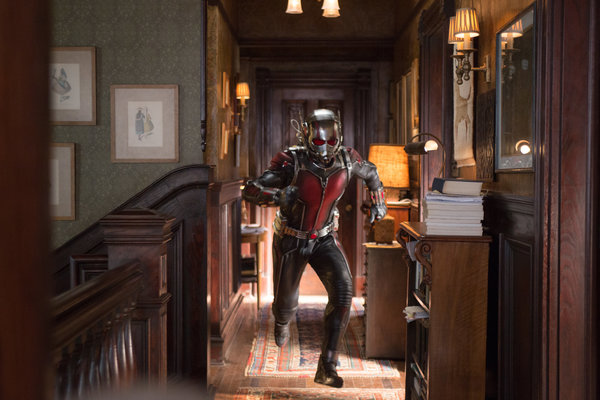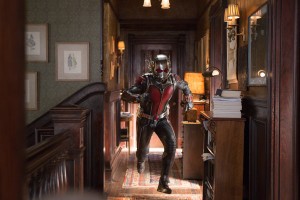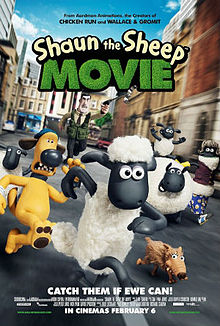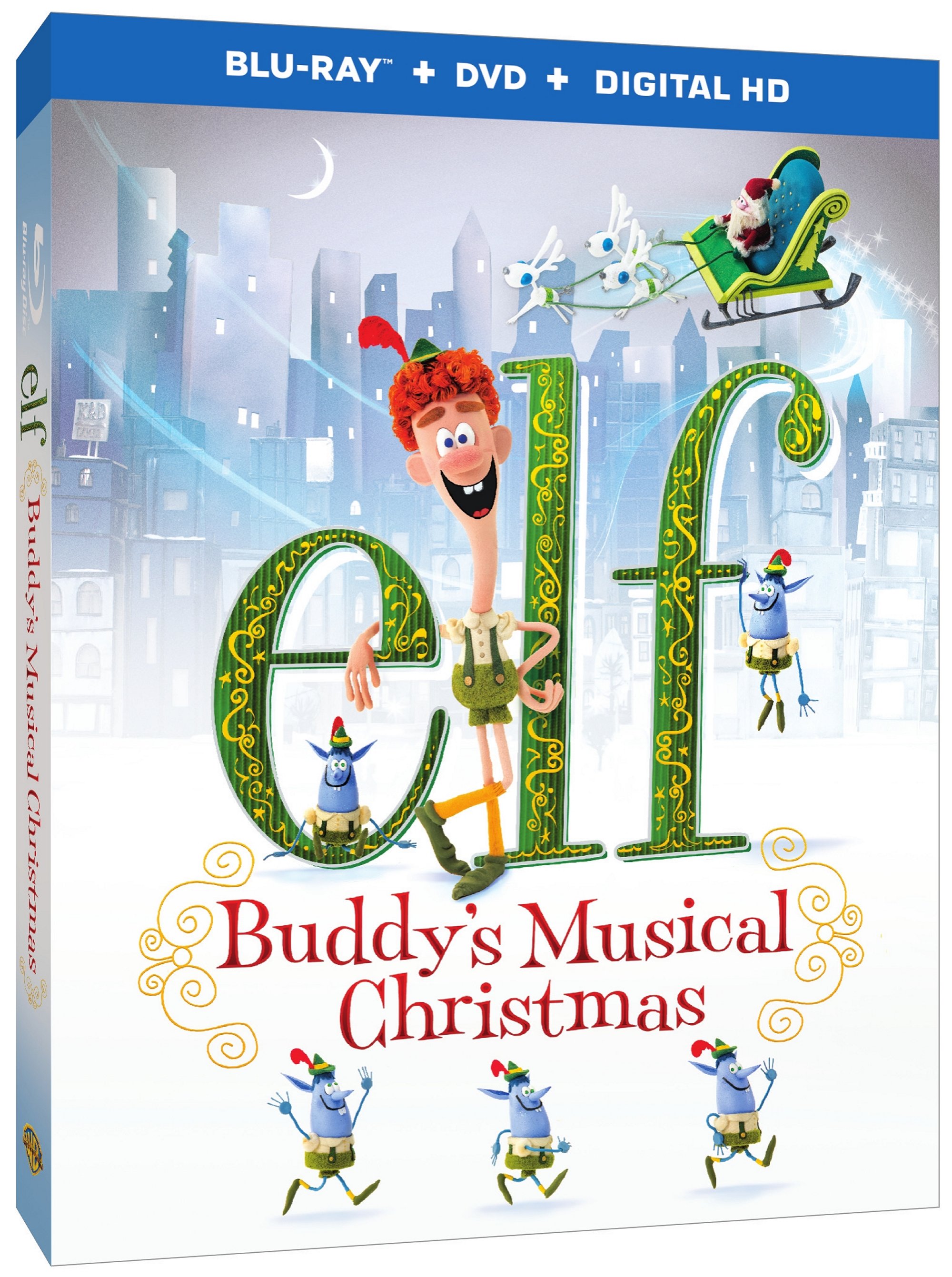Interview: Jake Morrison on the Special Effects in “Ant-Man”
Posted on December 5, 2015 at 3:35 pm
Jake Morrison is the guy behind the visual effects for Marvel movies like “Thor” and “The Avengers” and for Ant-Man, which is out on DVD December 8, 2015. He’s already working on the next “Thor” movie.

It was a lot of fun to talk to him about what went on behind the scenes. “The interesting thing about the way that Marvel approaches this stuff is that each of the films is distinct in the sense that they are superhero films but they are often a different genre. Like Captain America: The Winter Soldier is very much a political thriller and then Ant Man is a heist film at its heart. I’m like ‘Cool, we get to make a heist movie.’ So then you go through and you start looking at all the heist movies and the visual language used in ‘Oceans 11’ going way back and then because it’s a superhero film on top of that, you then get to go and mine all of that stuff. I would definitely say that the movies each one of them is very different when I starting a movie at Marvel you almost throw with the rulebook that established on the last one and you start again from scratch because they really put story first and character first and then the logistic specs to come up with the technologies to be able to make it.”
Morrison looked at the way shrinking and tiny humans had been portrayed in films going back to the 1950’s. “My main research was going back and watching ‘Incredible Shrinking Man’ and ‘Tom Thumb’ and ‘Darby O’Gill and The Little People,’ ‘Fantastic Voyage,’ ‘lnnerSpace’ ‘Honey I Shrunk The Kids,’ and ‘The Borrowers.’ These films don’t come out that often but they have been coming out over a very long time. ‘Incredible Shrinking Man’ was 1957 whereas ‘The Borrowers’ was 1997 so there is a big spread on these things. And the interesting thing about the shrinking films is each one of them the pioneered the new technology so that they could show that the audience something they hadn’t really seen before. The key for the shrinking films is always to bring people along, take them on a ride, that’s always clear, to show them a world that they are familiar in a perspective that they hadn’t seen it before. Like in ‘Incredible Shrinking Man’ they do incredible split negatives where they built two sets and that they do the math and put the cameras at the right place so he looks small when he’s interacting with a normal size actress. That was groundbreaking at the time. ‘Fantastic Voyage’ and ‘Darby O’Gill and The Little People’ used forced perspective. The challenge now is that the audience is so incredibly sophisticated and has seen so many things and believes that we can do a lot of stuff but is very suspicious of being tricked as well. All of the technology that we’ve got currently at our disposal push that forward and sort of glue it into the traditional filmmaking tool set which was to say that we built all the mini sets for real and shot them all for real and lit them for real and then glued all that stuff into the latest technology so we could then put in all the dramatic camera moves and film these action sequences the filmmakers wanted to. It’s sort of a great balance of being able to do all the stuff at the same time.”
One of the highlights of the film is a serious superhero fight that takes place on a toy train set. “For starters, it is a real bedroom, a set that was built and then we let loose our team, a lot of people for ten full days just literally with still cameras just taking pictures of everything. We call that ‘hosing it down.’ They would basically go through and shoot unbelievable levels of details to get literally the carpet threads, so that when he’s running through the carpet and he’s actually pushing carpet threads out of the way, they would actually go and shoot to that level of detail so we can see the individual makeup of the fibers in the carpet. There were literally hundreds and hundreds of thousands of images we shot for this. We had everything lit properly so you could really see what it should look like. We had a dedicated macro unit which was effectively a team of 25 people that ran for 40 days alongside principal photography who literally would shoot motion picture photography and then we do these stills and then we would scan with a little prop scanner down to this tiny level of detail and then effectively you’ve got all that stuff harvested. You have got real sets that were really built by the art department, really lit by the director of photography and then you take all that stuff and then we reassembled that entire room in the computer. We can take virtual cameras and express any shot in any language that the filmmakers would like. It’s kind of unique to say we studied films like ‘Unstoppable,’ you know the Tony Scott film, and so we would intentionally use lenses that would be used in a real full-scale action movie. So you are intentionally doing wide lenses close to people or you are doing long lenses far away as if in this sort of chase vehicle following the train. We are using framing that you would use on a full-scale epic but then at the same you’ve got all this crazy details. Like Thomas the Tank Engine has fingerprints on it. Kids’ toys are not pristine. Kids kick those things around, so let’s get these layers of realism in there. And so we started building up all these layers of stuff and shmutz and oily, greasy fingerprints and scuff on the paint. It’s just this layer of realism that you have to build in there before then on top of it you tell this impossible story. If you look at it, we have actually got helicopter shots in there, the shots where we literally fly the helicopter over the train that’s coming towards us and for those even though that’s sort of virtual helicopter it feels like it is only actually traveling about 12 inches or 15 inches in the real room, we actually went back to helicopter footage that we shot in other movies and we ran those real helicopter plates through an analysis and extracted like the real footage. Because when you are in the helicopter, the pilot is fighting the wind, the wind is pushing the helicopter to the right and he’s pushing the helicopter back to the left, the director of photography who is in the helicopter, he’s trying to lock on the target but there is a little bit of drift and there are these little zooms that they do to try to hold up the things. So all that stuff is actually real; we just applied it to the virtual world.”
Another challenge was making insects appealing, even adorable. “That was something from the very beginning that Kevin told us he wanted to make sure, about. We found one particular ant which is called the Saharan Silver and it has this beautiful coat. There is no other way to describe it. They are hairy, but what they have done to survive in the Saharan extreme temperatures they’ve developed almost like a heat shield but when you are close to it looks almost like the brushed coat of an Arabian stallion. I no other way to describe it but when you step back a little bit it actually almost looks like a beautiful polished metal. So that was the ant for us and we modeled the four different types of ant on that as a basis just to give them a little sheen and made them look prettier and then in terms of character, it’s a really good opportunity for the animators. I know our animation team really enjoyed working on this stuff because you’ve got the Bullet ants which are big bruisers, about the size of a truck to Ant Man when he is half an inch tall and these things are like an inch and an inch and quarter long. They are actually really spiny. Their movements are a very sort of aggressive start stop motion. We referred to them as the Ray Winstones of insects. Then you go all the way down to the little things, the crazy ants which are about the same size as a puppy would be for Ant-Man when he is down at that size. So we felt if we could inject maybe five or ten percent of puppy in there, so they are really playful, that would work. And it’s a very, very fine line to be able to do this to make sure it’s real or but also not too cartoony. I mean it’s a balance we work really hard at.”






